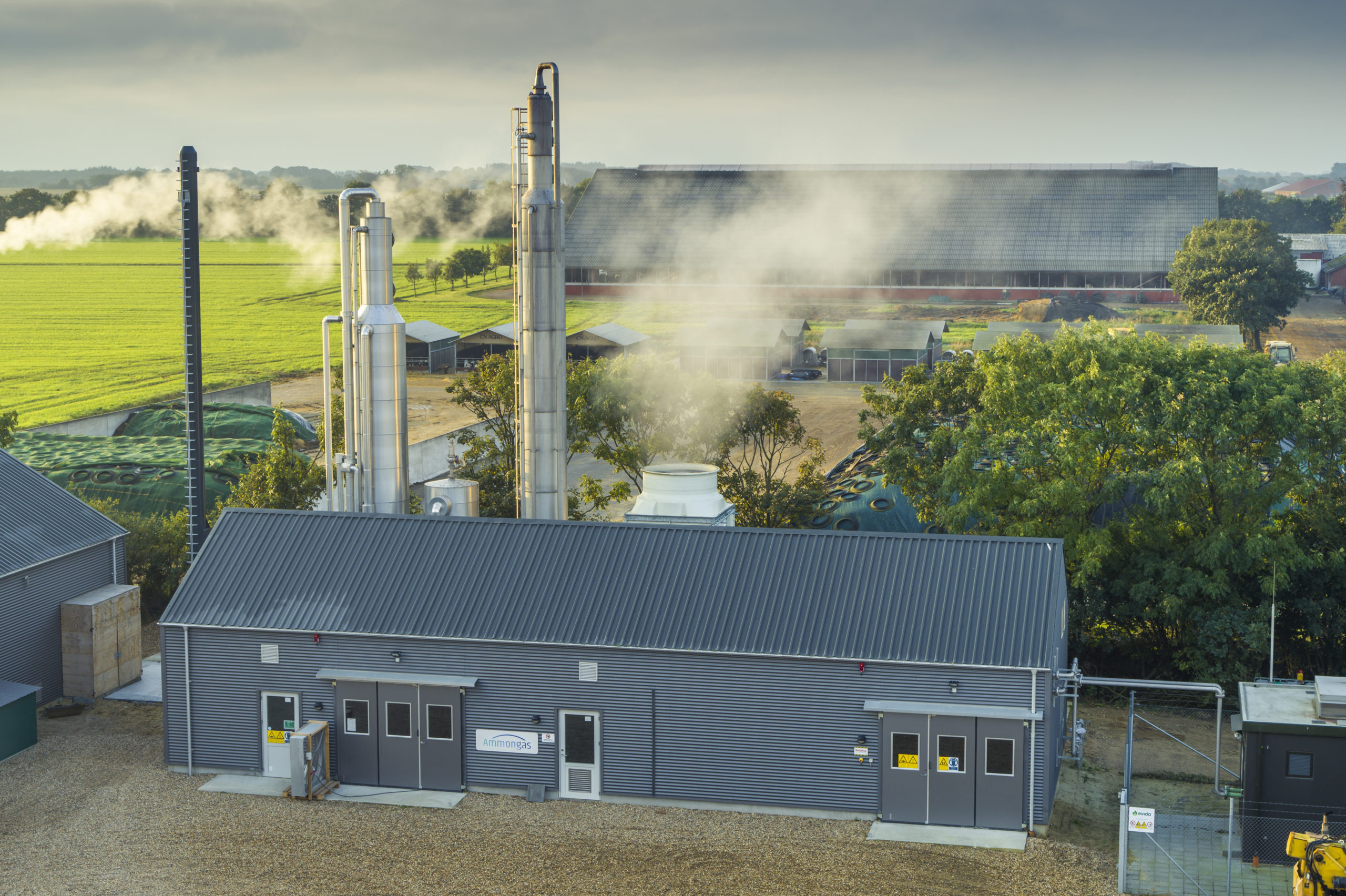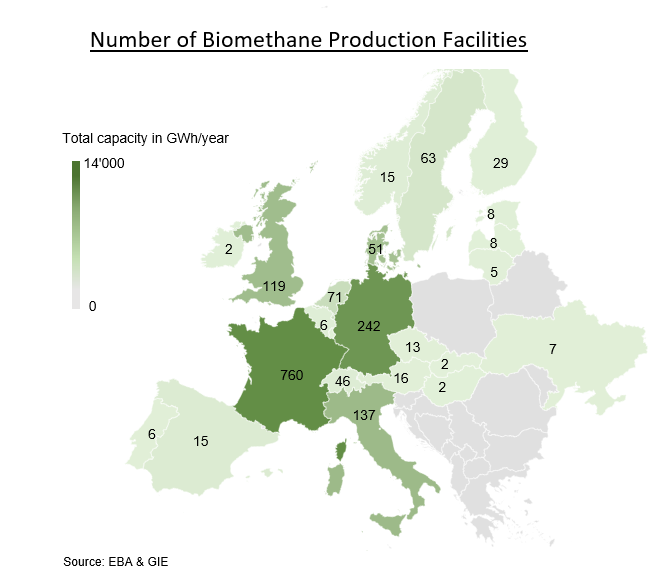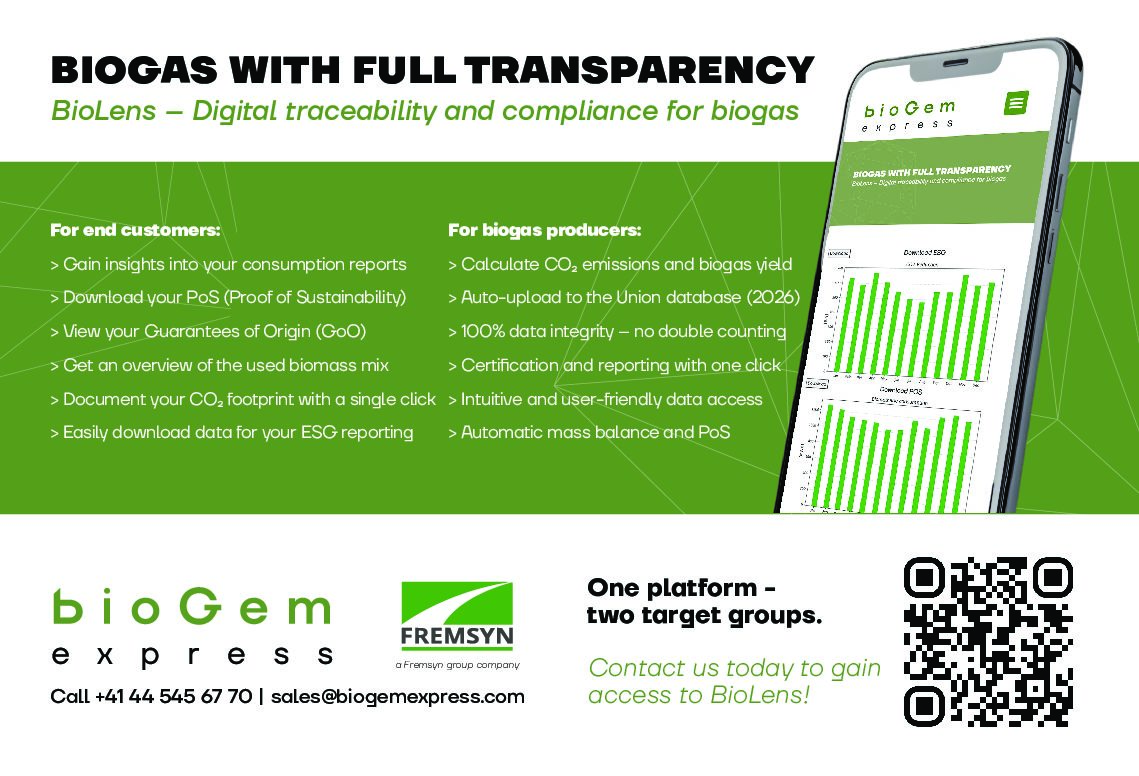Upgrading technology
One of the absolute biggest advantages with the biogas technology, is the ability to use it in the established energy system, without having to modify existing infrastructure. Immense investments have already been put down across Europe in the transnational gas-grid transporting gas from North to South, East to West. This established system allows the biogas to move across vast distances to end-users. However, there is one small obstacle. The biogas needs to be compliant with existing standards for gas flowing through the pipes.
Raw biogas is a mixture of gasses, primarily carbon dioxide (CO2) and methane (CH4) plus small amounts of trace gasses such as hydrogen sulfite and water vapor. Due to its corrosive properties, hydrogen sulfite is biologically removed and turned into sulfuric acid and the gas is dried. Now the last step before biogas can be sent on its way to end-users through the extensive gas grid is the upgrading from biogas to bio-methane. Currently three technologies are widely used for this process.
Water Scrubber technology
This technology uses the different solubility of the raw biogas mixture in water. CO2 is absorbed appr. 26 times more than CH4 in water and these chemical properties make it possible to clean the biogas simply by letting the biogas flow through drizzling water in an array of absorption- and description columns. Other absorbents than water exist but will increase the operation costs.
Chemical absorption
Chemical absorption resembles water scrubbing in many ways, but the absorbent isn’t water. The underlying principles are the same, as different solubility of CO2 and CH4 in an absorbent is utilized. A common absorbent is ethanol amin generating purity in the CH4 stream of >99% and very limited methane loss. Chemical absorption requires relatively high operating temperatures hence is a bit more energy consuming. However, the stability of the operation and purity is very important for the biogas plants.
Membrane technology
The last of the most common technologies is membrane separation. Membrane technology uses the difference in molecule size to separate CO2 and CH4 using pressure. It is a relatively low-cost operation yielding a less pure CH4 stream. Membrane technology is usually used in combination with either of the above-mentioned technologies to optimize the yield and purity.
The importance of upgrading
All purification processes are a trade-off between the initial value of the input and the added value to the output. When it comes to biogas, the upgrading and utilization of existing gas infrastructure is of much greater value than the use of biogas directly and locally at the production plants. Upgrading adds a dimension of mobility to the gas, which can now be provided for the consumers where it generates the most value and equally important the biggest climate effect possible.
That is the absolute biggest advantage of Bio-methane, formerly known as upgraded biogas. It allows for optimized climate and environmental effect because it can be used by the industries with the highest carbon footprint across Europe, simply by turning their back on coal and oil, and turning on the gas.
Reach out to us at biogemexpress.com and hear what we can do for the carbon footprint of your company.



